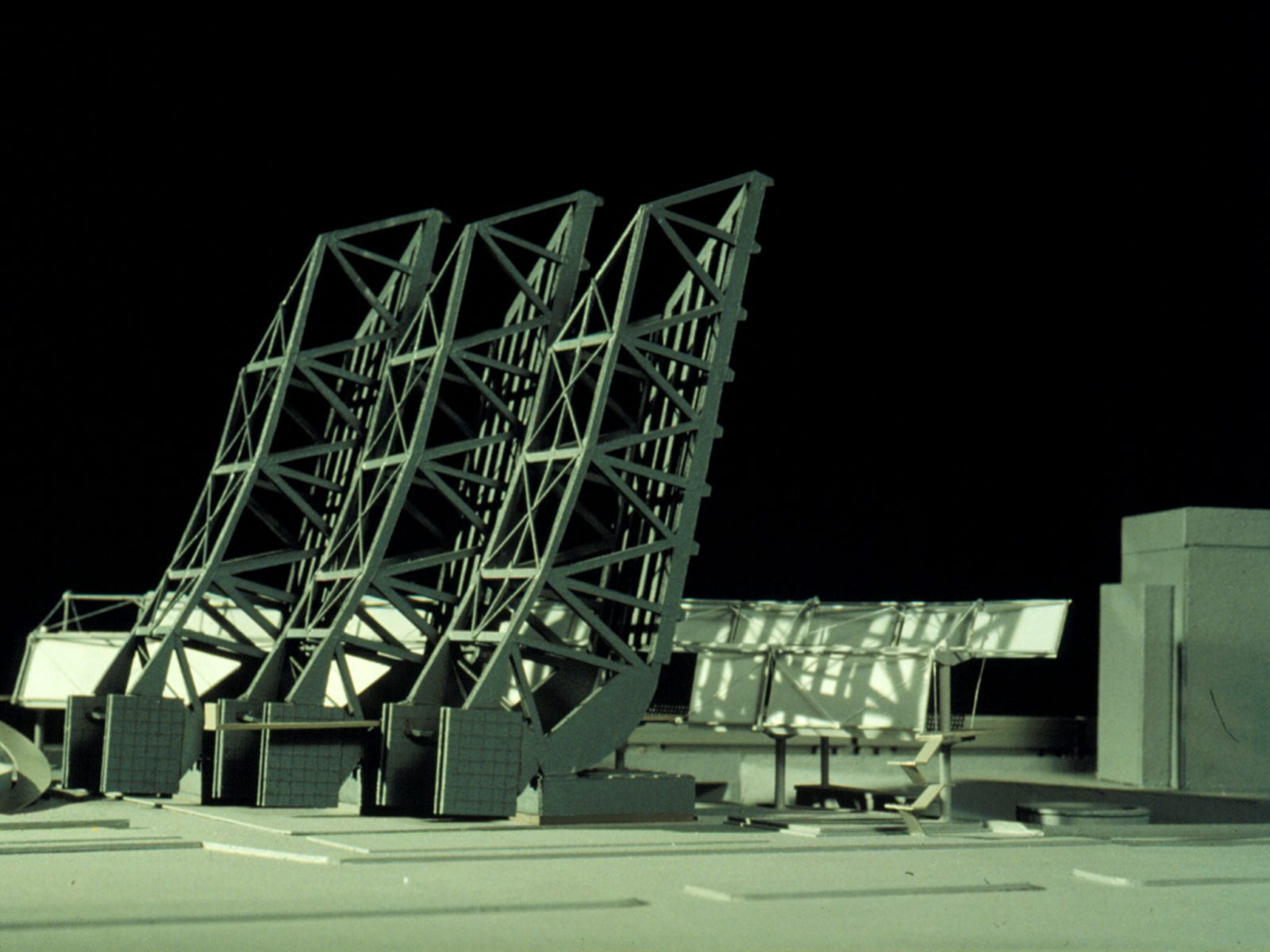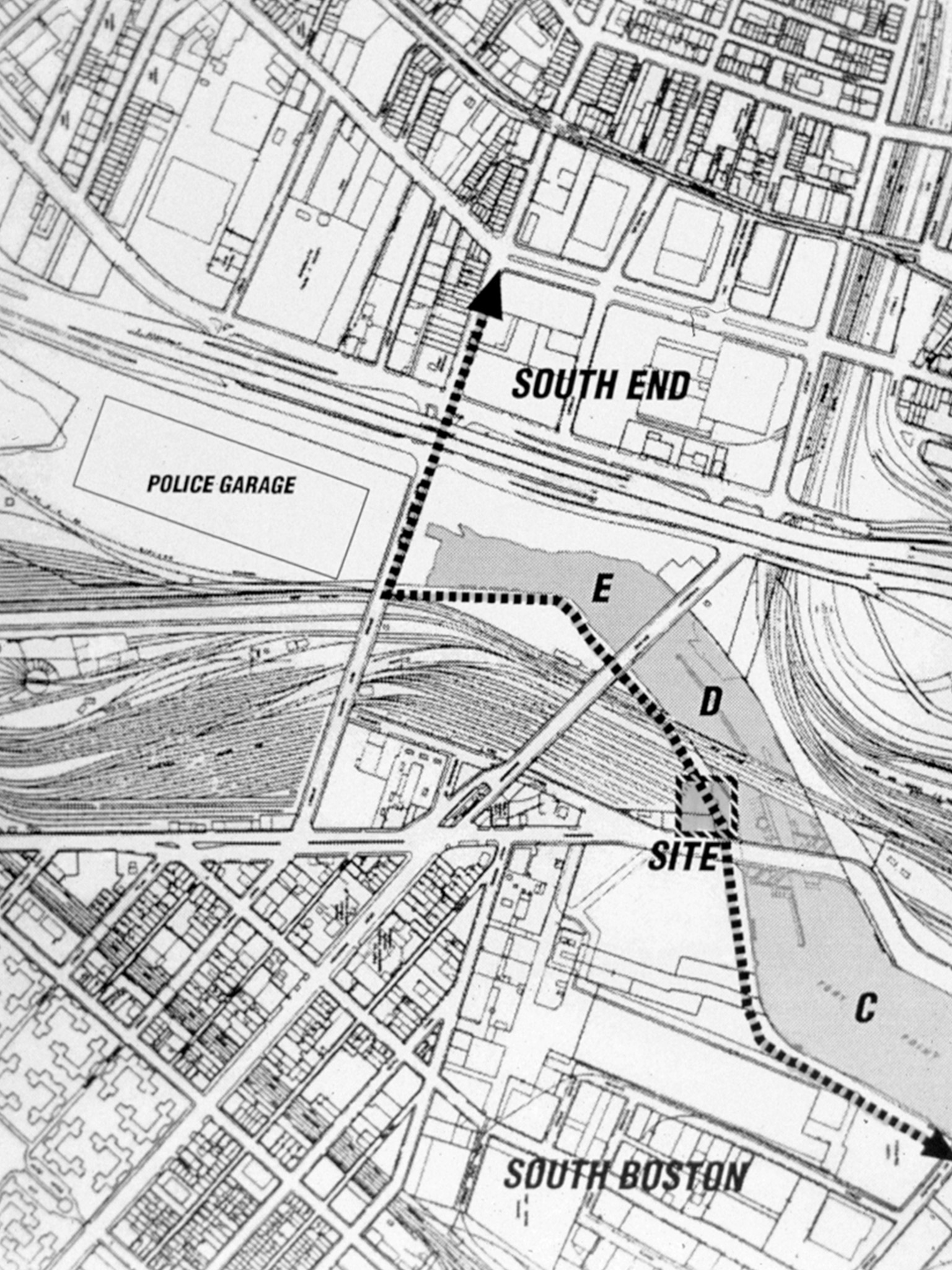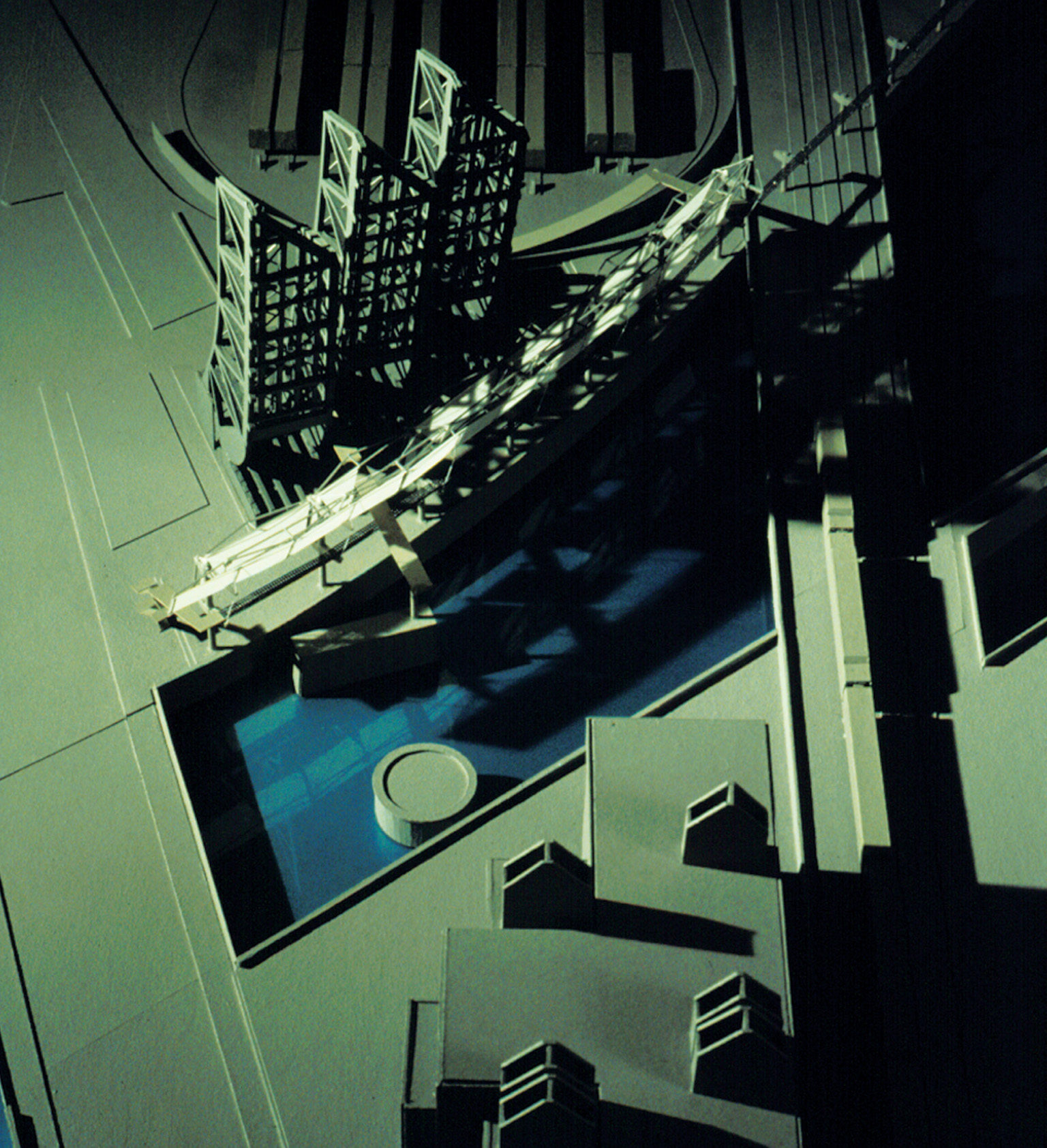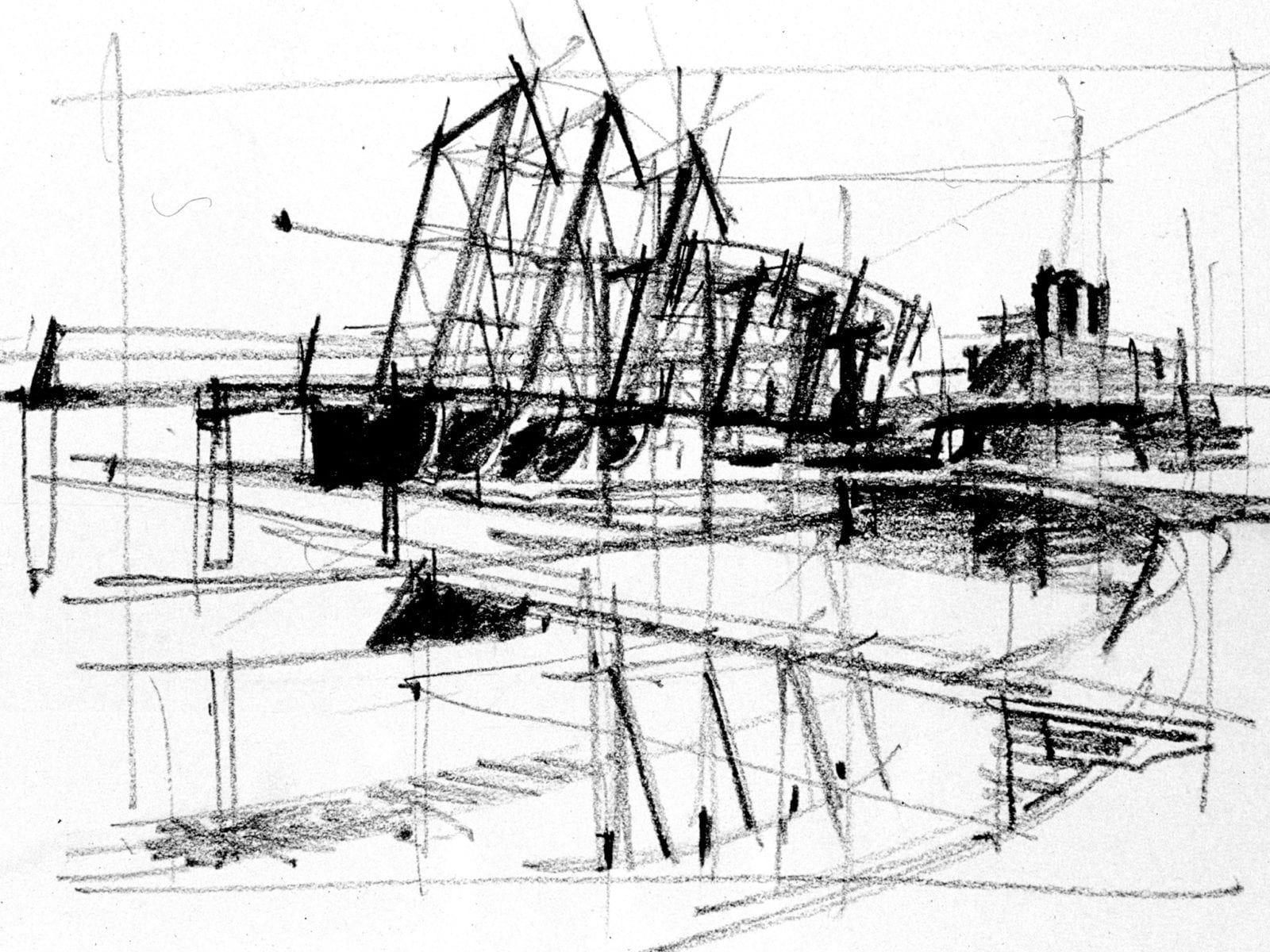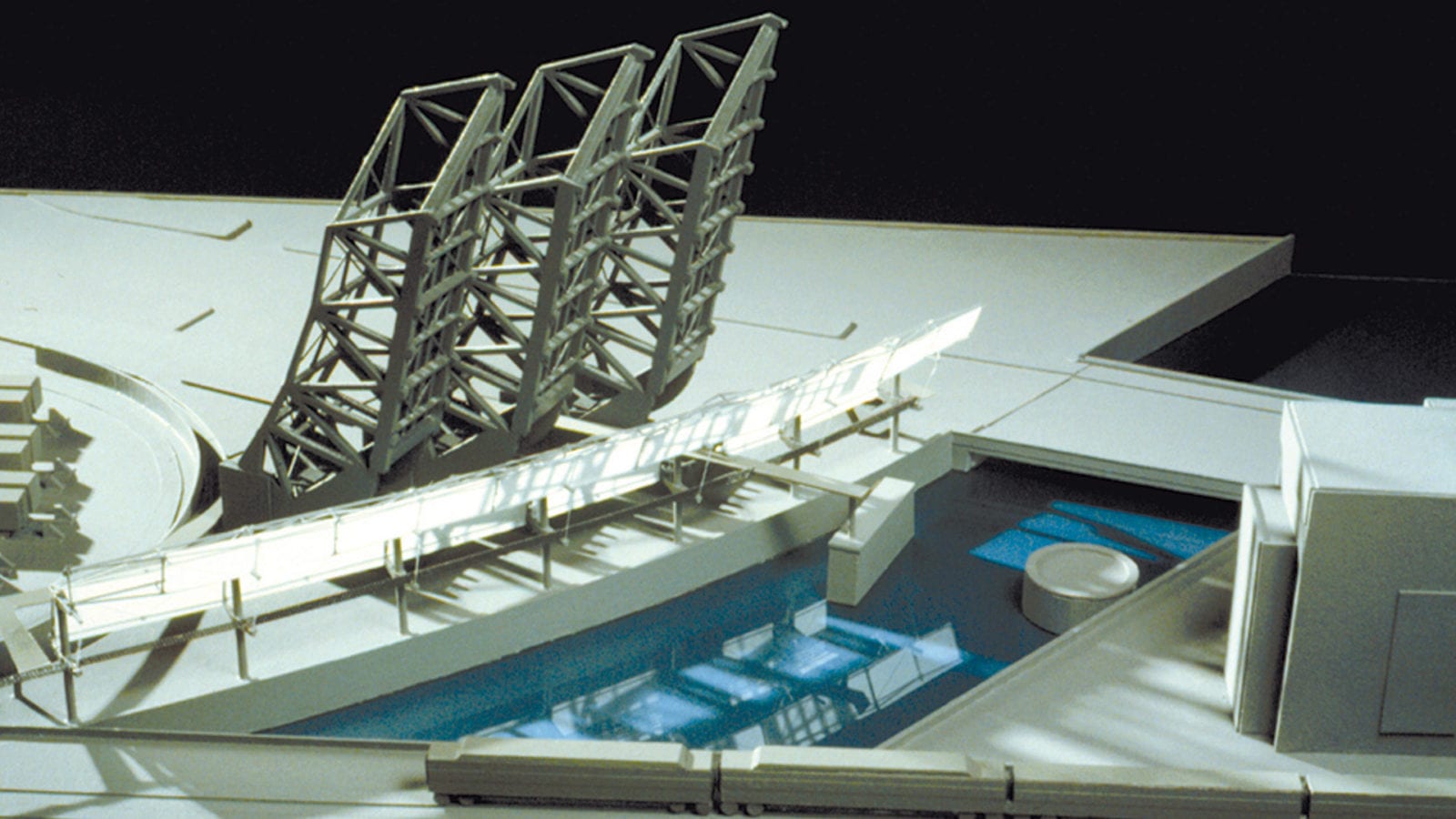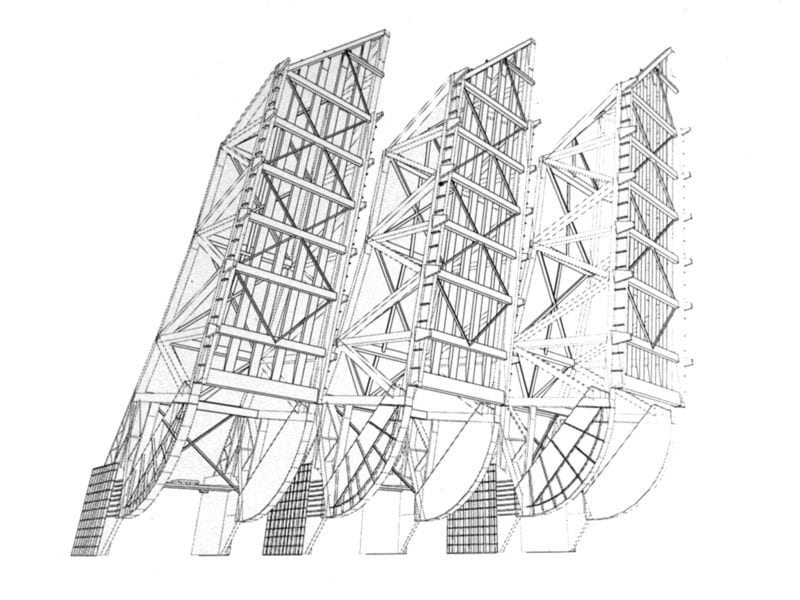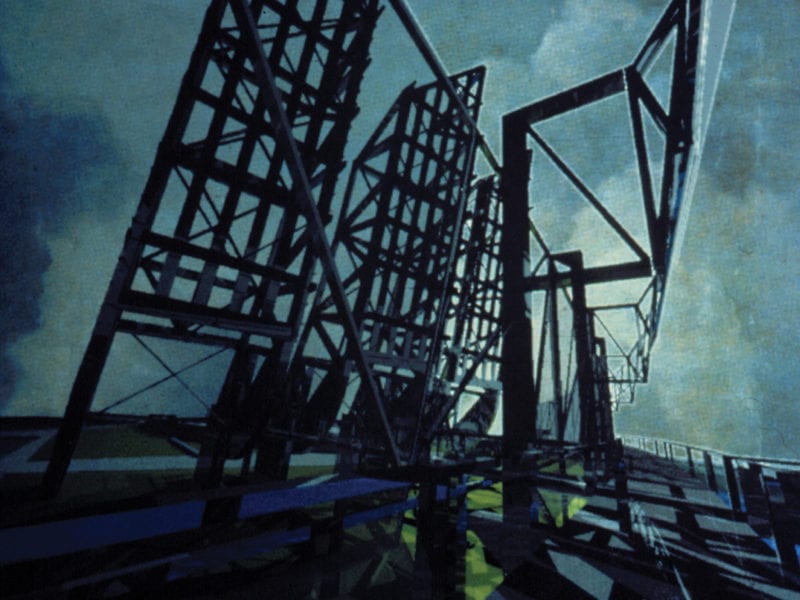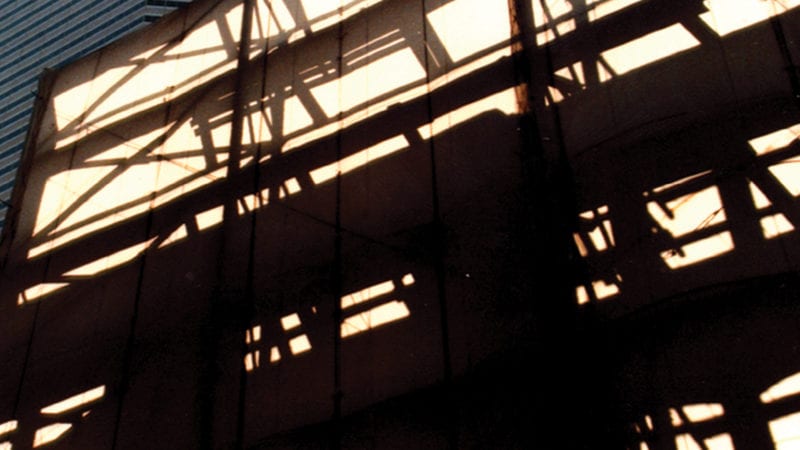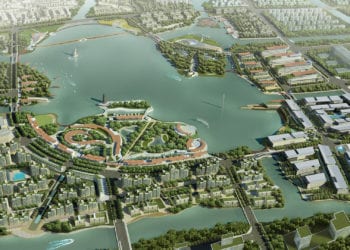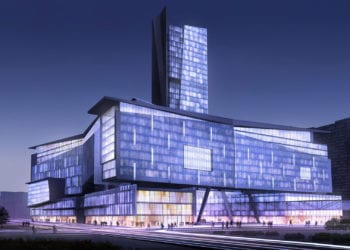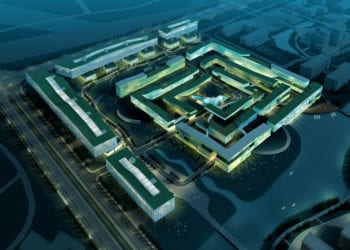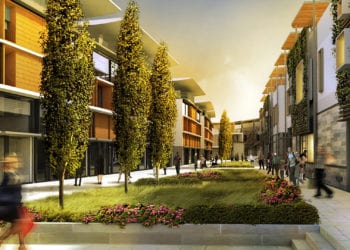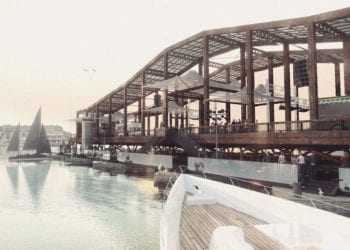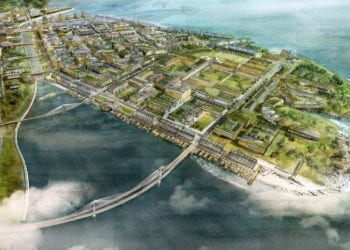Synopsis: This project repurposes a defunct drawbridge and related industrial artifacts to reinvigorate “leftover” urban spaces. It imagines a new network of elevated walkways connecting neighborhoods that highways and waterways currently separate. The design of the walkways honors Fort Point Channel’s industrial history in a way that connects past and future as well as neighborhoods.
Detailed Descriptions: The Rolling Bridge Initiative (RBI) is a nonprofit organization that seeks to reuse the “Rolling Bridge,” a neglected railway drawbridge spanning Boston’s Fort Point Channel Basin, slated for removal as part of the Central Artery project. PLA collaborated with Mike Tyrell of RBI to reactivate the underused industrial landscape surrounding the Rolling Bridge as a timepiece, a trace of past urban connections, and potential future links.
When in use, the bridge’s three parallel sections pivoted open by counterweights. Relocated in an upright position adjacent to their original site and set back from the channel’s edge, the bridge sections are visible at grade or from an elevated walkway perched 14 feet above the channel. This walkway is part of a proposed network of paths and parks linking the residential South End with the Fort Point Channel warehouse district.
A pair of offset scrims, measuring approximately 40 feet high and 300 feet long, are hung alongside the elevated walkway. They receive the changing patterns of light and shadow cast by the bridge, which are reflected in the channel’s surface. The three-dimensional bridge is thus transformed into the two-dimensional shapes that appear on the scrims. Viewers then re-experience the bridge’s three-dimensional form while traversing the elevated walkway and under and alongside the shapes appearing on the curtain. As the movement of the sun and clouds modify the shapes, perception of the bridge shifts through the day and seasons.
The site recaptures a lost physical and historical connection to the urban landscape. In essence, the bridge segments face downtown Boston and align with the granite footings of an earlier bridge on the site. Pedestrians walking through and between the bridge segments on a series of stairways would experience the superstructure as no one could during the operation of the bridge, thus becoming familiar with the patterns and materials of urban infrastructure.
The bridge is also a prominent marker for commuters traveling on the highways overlooking the site. From all points of view, the Rolling Bridge will be transformed from a discarded piece of Boston’s infrastructure into a gateway and icon of the industrial era.

